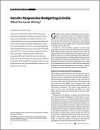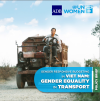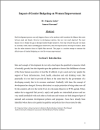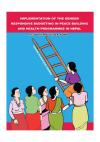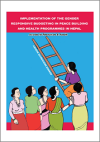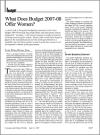TROUVÉ 20
The article examines the two main strategies adopted by the Government of India for institutionalizing gender responsive budgeting to highlight what has gone wrong and what needs to be fixed in order to achieve better outcomes for women.
Transport is one of the most important aspects of national infrastructure and a key to gender equality. Women’s opportunities to access paid work are reduced when there is poor investment in gender
Well-being gender budgeting (WBGB) experiences use a multidimensional approach for planning and budgeting combining the Capability Approach along with gender responsive budgeting.
This paper is an attempt to measure the effectiveness of Gender Budgeting as a tool for women empowerment. In recent years, Gender Budget Initiatives have emerged as an effective way to bridge gender gaps.
The GRBC has developed five criteria for evaluation of genderresponsiveness of the budgeted government programmes and projects.
This publication is a compilation of two studies carried out to assess GRB in the peacebuilding and Health programmes under the EC/UN Women partnership programme on 'Integrating GRB into the Aid Effectiveness Agenda'.
The document provides a gender analysis of the Australian Treasurer's 2006/2007 budgetary changes by examining the gender impacts of newly introduced tax concessions.
The Local Level Gender Budget Initiative in the Philippines: the case of the bifurcated health program was published in 2006 by UNIFEM and the Women's Action Network for Development (WAND).
This article takes a closer look at the gender budgeting statement in the Union Budget 2007-08 in India and reveals that programmes and allocations remain plagued by mistakes, with several schemes wrongly prioritised as being exclusively for women. Economic and Political Weekly April 21, 2007
